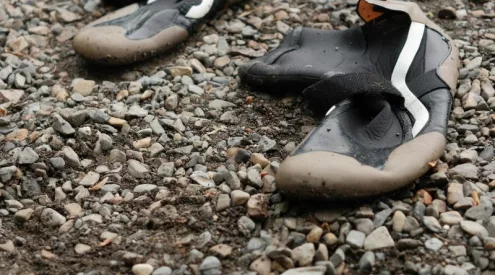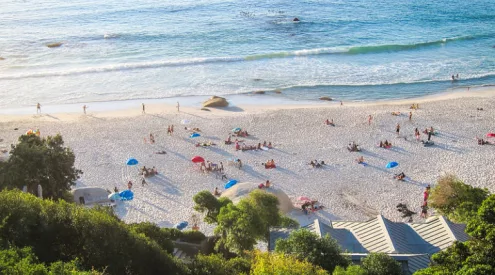When Hannes and Noa Lochner set out to replace their beloved work vehicle, a custom-built Land Rover known as Noa’s Ark, the task was monumental. After a decade, much of it spent in the Kalahari Desert, their trusty Land Rover needed retirement. The new project demanded a reliable 4×4, crucial for their remote work without support or communication, especially following their experiences in the Okavango Delta. After careful consideration, they chose a Toyota game-drive vehicle with low mileage and a reliable history, then embarked on an eight-month conversion journey during the Covid lockdown.

Photo: Getaway Gallery
1. Double Waterproof Canvas Bedroll:
Embracing Africa’s vast open spaces, a double waterproof canvas bedroll becomes their cozy haven. Fitted with zips on both sides, it offers a warm, comfortable escape atop their vehicle, crucial even during the cold winter months.
2. Aluminium Storage Boxes:
Storage is paramount in their vehicle. These robust, water- and dust-proof boxes protect sensitive equipment like camera gear, laptops, and hard drives. Ingeniously, they can be reconfigured with a flat-laid table to form a double bed in the back of the vehicle – a perfect solution for rainy nights when rooftop sleeping isn’t an option.
3. Winch and Bull-bar:
Strategically scattered throughout the vehicle, USB charging plugs cater to their power needs. The yellow LED lights, chosen for their bug-repelling properties, provide illumination without attracting night-time pests.
4. USB Charging Plugs and Yellow LED Lights:

Photo: Getaway Gallery
Scattered throughout the vehicle, these amenities reduce nighttime bug disturbances and keep devices charged.
5. GPS by Tracks4Africa:

Photo: Getaway Gallery
This GPS system, sponsored by Tracks4Africa, has been a reliable guide for Hannes and Noa. It has proven its worth time and again, ensuring their safe return to civilization from remote explorations in the Kalahari and the Okavango Delta.
6. Charge Box and Central Console:
These spaces serve as a nerve center for their gear. Charging ports keep batteries ready, while soft-padded inlays protect lenses and other equipment. The dash cover, equipped with zips, neatly stows loose items and shields the dashboard from harsh sunlight.
7. Spare Wheel Covers from Escape Gear:

Photo: Getaway Gallery
Sourced from Escape Gear, these covers are not just protective but also practical, providing neatly zipped pockets for storing essentials like grilling tools and fire utensils.
8. Canvas Sail and Security Sides:
Essential for securing their valuable equipment during travel, the vehicle’s two large aluminium sides double as tables in camp. To counteract canvas’s limitations in storms, they’ve added an oversized cover that envelops the vehicle, ensuring dryness and peace of mind during tempestuous nights
9. Storage Canvas Bags:
To maintain an organized workspace, these sturdy bags hold jackets, raincoats, and other loose items. Their design allows quick and easy access, keeping the interior clutter-free.
10. Swiss Army Spade:

Photo: Getaway Gallery
A cherished World War I Swiss Army spade, gifted on Hannes’s 30th birthday, is compact yet effective for extricating the vehicle from tricky situations.
11. Snorkel:
An indispensable tool for traversing the water-laden routes of the Okavango Delta, ensuring the vehicle’s safe passage through deep waters.
12. Compressor, Tyre Pump, and Inverter:
These tools are lifelines in remote areas. The compressor and tyre pump are frequently employed for puncture repairs, while the inverter, powered by a secondary battery, charges various electronic devices.
13. Work Space with Hygger Nanuk Suits:
Comfort is key during winter filming sessions, and the snug setup includes all essentials for extended shoots.
Every element in the Lochner’s new vehicle, now a mobile filmmaking studio, was meticulously tested and chosen for its efficiency, durability, and comfort. This transformation story reflects their deep understanding of the bush and the rigorous demands of their profession.
Follow us on social media for more travel news, inspiration, and guides. You can also tag us to be featured.
TikTok | Instagram | Facebook | Twitter
Also read: Namibia – Land of Contrasts


















